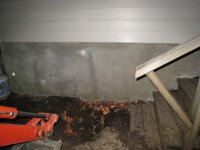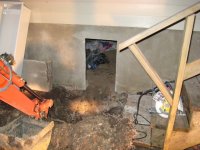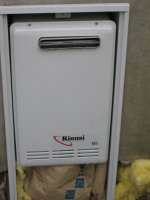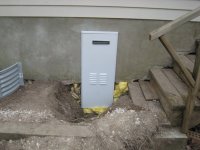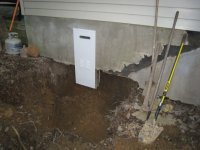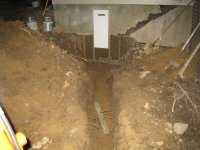srossman
Silver Member
Ok,
So It has taken me a while to actually getting around to post this project, but I thought some might find it interesting. First the back story:
Back in December of 2006, my tanked water heater suddenly began leaking. So I did the smart thing and turned the water off and started looking for a new water heater. I had always liked the idea of switching to a tankless model, so I began the research. I quickly determined that propane was the only way to go. So I ended getting a rinnai exterior tankless unit. I liked this unit since I would not have to run any exhaust pipe and I would free up some space in my utility closet where the old water heater tank used to sit.
So once I got the unit delivered the fun really began. I had to find a plumber that could install the unit as I didn't feel completely comfortable running the gas line myself. Plus I didn't want to have any issues if I needed warranty work down the road. So after talking with the plumber I found out that in order for the proper freeze protection, I needed two solenoid valves. One being a normally open valve and one being a normally closed valve. If the electricity would go out, the normally open valve would close and not allow any water into the heater, and the other valve would open allowing the unit to empty. So attached are the pictures of me digging deep enough to get the unit installed and then after the unit has been installed.
So It has taken me a while to actually getting around to post this project, but I thought some might find it interesting. First the back story:
Back in December of 2006, my tanked water heater suddenly began leaking. So I did the smart thing and turned the water off and started looking for a new water heater. I had always liked the idea of switching to a tankless model, so I began the research. I quickly determined that propane was the only way to go. So I ended getting a rinnai exterior tankless unit. I liked this unit since I would not have to run any exhaust pipe and I would free up some space in my utility closet where the old water heater tank used to sit.
So once I got the unit delivered the fun really began. I had to find a plumber that could install the unit as I didn't feel completely comfortable running the gas line myself. Plus I didn't want to have any issues if I needed warranty work down the road. So after talking with the plumber I found out that in order for the proper freeze protection, I needed two solenoid valves. One being a normally open valve and one being a normally closed valve. If the electricity would go out, the normally open valve would close and not allow any water into the heater, and the other valve would open allowing the unit to empty. So attached are the pictures of me digging deep enough to get the unit installed and then after the unit has been installed.
